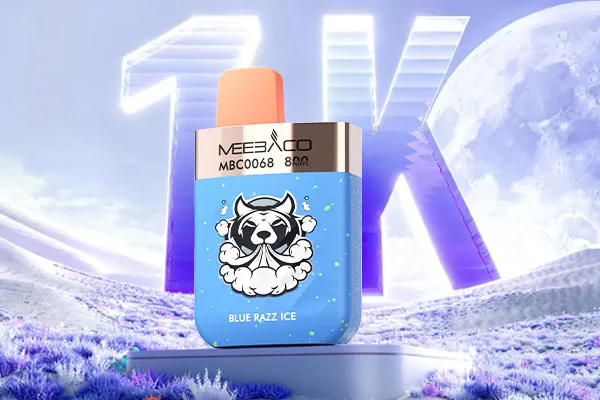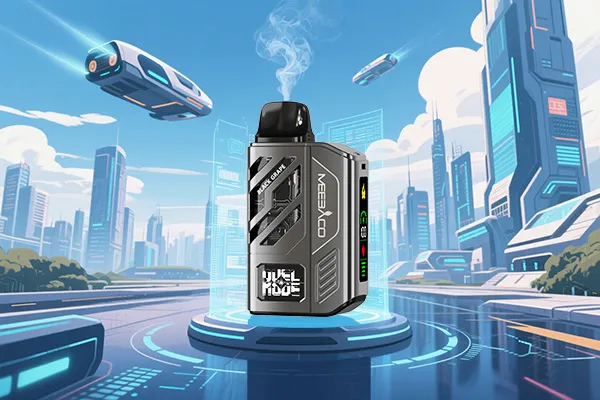You can master the latest information, new product , exhibition, promotion, etc
For vapers and industry enthusiasts alike, the question of "where e-cigarette smoke comes from" is more than just curiosity—it’s the core of understanding how vaping works. Unlike traditional cigarettes that burn tobacco to produce smoke, e-cigarettes generate a vapor (often called "aerosol") through a precise atomization process. This article breaks down the science behind vapor production, key components driving atomization, and the latest technological advancements shaping the vaping experience.
What Is E-Cigarette Vapor, Exactly?
First, it’s critical to clarify: the "smoke" from e-cigarettes is not smoke at all. It’s a fine aerosol composed of tiny liquid droplets (0.5-1.5 micrometers in size) suspended in air . These droplets form when e-liquid is heated to a temperature that converts it from a liquid to a breathable vapor—without combustion.
Traditional cigarette smoke contains over 4,000 harmful chemicals from tobacco combustion, but e-cigarette vapor is derived solely from the e-liquid’s components. This fundamental difference is why vaping has become a popular alternative for smokers seeking to avoid tar and carbon monoxide.
The Core of Atomization: How E-Cigarettes Produce Vapor
At its heart, e-cigarette atomization is a process of converting electrical energy into thermal energy to vaporize e-liquid. Here’s the step-by-step breakdown:
1. Triggering the System
When you inhale from an e-cigarette, an airflow sensor detects the suction and activates the device . The battery then supplies power to the atomizer—the "engine" of the e-cigarette . Some devices use a manual fire button, but the core energy transfer remains the same.
2. Heating the Atomization Core
The atomizer’s key component is the atomization core (or "coil"), which is typically made of medical-grade materials like SUS 316L stainless steel, nickel, or titanium . When electricity flows through the coil, it heats up rapidly—usually to a temperature between 200-300°C (far lower than the 800°C of burning tobacco).
3. Vaporizing the E-Liquid
The heated coil comes into contact with e-liquid, which is drawn to the coil via a wicking material (often organic cotton or ceramic) . As the e-liquid touches the hot coil, its surface tension decreases, and it vaporizes into tiny droplets. These droplets are then carried by the inhaled airflow, forming the visible vapor.

Key Components Powering Atomization
Three components work in harmony to enable effective atomization—remove any one, and the process fails:
1. The Atomization Core
The atomization core is the most critical part, determining vapor quality, flavor accuracy, and device lifespan . Two dominant technologies lead the market today:
Ceramic Core: Popular in pod systems for its pure flavor reproduction and reliability. Ceramic’s porous structure ensures even heating and consistent vapor production.
Stainless Steel Mesh Core: Innovations like NotchCoil Mini (a compact "square-round mesh" design) offer 50% more heating area than traditional coils, delivering faster heat-up times and more uniform atomization . Medical-grade SUS 316L stainless steel adds safety and inherent temperature control capabilities.
2. E-Liquid: The Vapor "Source Material"
E-liquid is the foundation of vapor production, with four primary components:
Vegetable Glycerin (VG): A thick, sweet food additive that generates most of the vapor. Higher VG ratios mean larger, denser clouds.
Propylene Glycol (PG): A thin, FDA-approved carrier that enhances flavor and provides the "throat hit" similar to cigarettes.
Nicotine: Optional (available in 0mg, 6mg, 12mg, 18mg concentrations) to satisfy cravings. It affects throat hit intensity but does not directly impact vapor volume.
Flavorings: Food-grade flavorings that create the diverse tastes of vaping, from fruits to tobacco blends.
3. The Battery
Batteries supply the power needed to heat the coil. For small pod systems, compact lithium-polymer batteries deliver enough energy for efficient atomization, while larger mod devices offer adjustable power settings to fine-tune vapor production.
Advanced Atomization Technologies: Temperature Control
Modern e-cigarettes often feature temperature control (TC) technology, which optimizes vapor quality and safety . TC works by measuring the coil’s resistance change as it heats (using the material’s Temperature Coefficient of Resistance, or TCR). When the coil reaches the set temperature (typically 200-220°C), the device adjusts power output to maintain that temperature.
This technology prevents overheating, preserves flavor (by avoiding thermal degradation of e-liquid), and reduces the risk of dry hits . Stainless steel coils like SUS 316L are ideal for TC, as their stable TCR allows precise temperature regulation.
Factors That Influence Vapor Production
Not all vaping experiences are the same—several variables affect how much vapor is produced and its quality:
Coil Resistance: Lower-resistance coils (e.g., 0.1-0.5Ω) draw more power, generating more heat and larger clouds.
E-Liquid Formulation: VG-dominated blends produce thicker vapor, while PG-heavy ratios yield finer aerosols with intensified flavor.
Wicking Material: Organic cotton wicks offer rich flavor, while ceramic wicks provide longer lifespan and consistent performance.
Airflow Design: Wider air intakes dilute vapor for cooler draws, while restricted airflow creates denser clouds.
Device Power: Higher wattage increases vapor volume but risks burning the coil if not balanced with e-liquid viscosity.
User Technique: Longer, steadier inhalations allow more complete vaporization compared to short, abrupt puffs.
Conclusion: The Science Behind Every Puff
E-cigarette vapor is the result of a sophisticated yet accessible process: batteries power heating coils, which vaporize e-liquid’s VG and PG into a breathable aerosol. From ceramic cores to stainless steel mesh technology, advancements in atomization continue to improve flavor, cloud production, and safety.
Understanding these principles not only satisfies curiosity but also empowers informed choices about vape device selection and usage. As the industry evolves, atomization technology will remain at the forefront, balancing performance, safety, and user experience.









